
Chitradurga, a city in Karnataka, has a rich heritage and is associated with the legendary Onake Obavva. Chitradurga gets its name from Chitrakaldurga, an umbrella-shaped hill which lies here. It was also known by the names Chitradurg, Chitrakaladurga, and Chittaldurg. Here we bring to you a few interesting things about the legendary Chitradurga Fort.
Linked to Mahabharata
The folk legends claim that it was here in Chitradurga that Bhima, the mightiest of the Pandavas met his wife Hidimba Devi or Hidimbi. Her brother Hidimbasura would often terrorize the village and when the Pandavas came here during the exile with her mother Kunti, a duel ensued between Bhima and Hidimba. Legends further state that the boulders found here were a part of the weapons used during this epic clash.

From one king to another
This fort has seen many kings, from the Chalukyas to Hoysalas and the Vijayanagara kings. There are even some Ashokan rock edicts which link this ruling period to the Rashtrakutas, the Chalukyas and the Hoysalas. This fort was then taken by the Nayakas of Chitradurga and then by Hyder Ali in 1779. This fort was then captured by British forces only to be claimed by Hyder Ali’s son, Tipu Sultan.
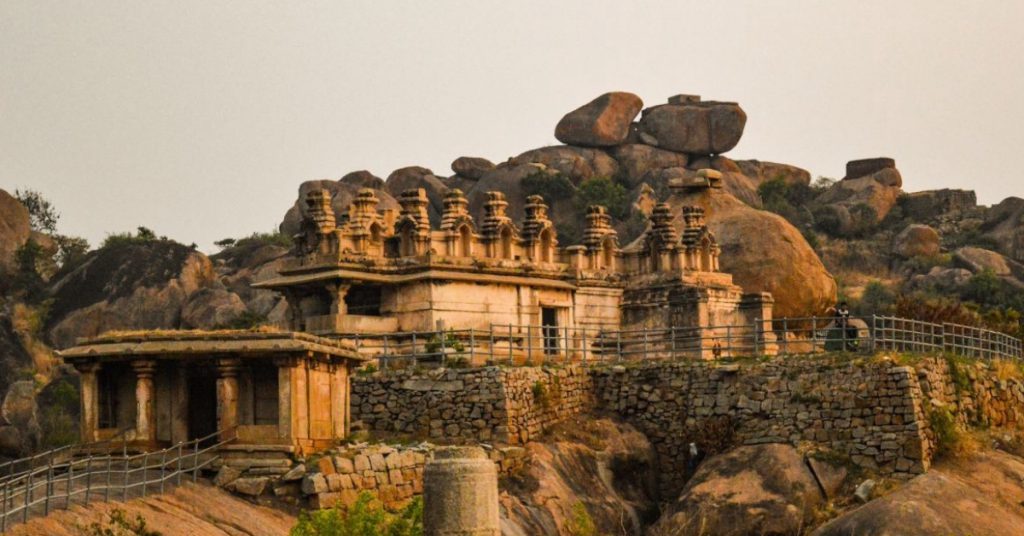
The Nayakas of Chitradurga
Thimmappa Nayaka was the first ruler of this lineage. The Nayakas of Chitradurga took independent control of the region for 200 years. It was during their rule that they would support both the Marathas and Hyder Ali. This tact of playing on both sides backfired when Madakari Nayaka V was betrayed by the Marathas when Hyder Ali attacked the fort and took him, prisoner. While it took several wars for Hyder Ali to finally triumph, it was during one of these wars that the heroics of Onake Obavva became a part of the folklore.
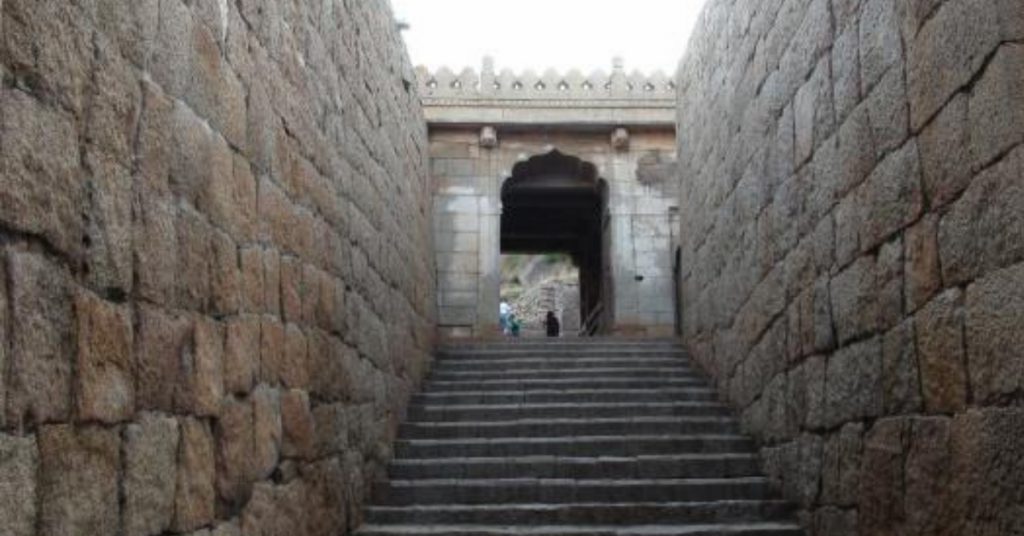
Onake Obavva
Obavva was substituting for her husband, a soldier named Maddha Hanumappa. She was guarding a secret opening when she heard the sounds of several enemy soldiers trying to get through the crevice. She hit them one by one with her onake (pestle for grinding paddy) with such force that they all died. When her husband saw her, she was surrounded by the bodies of these dead soldiers and this is when he blew the bugle and got his fellow soldiers to defeat Hyder Ali’s troops. Today, you can see that Obbavvana Kindi in Chitradurga.
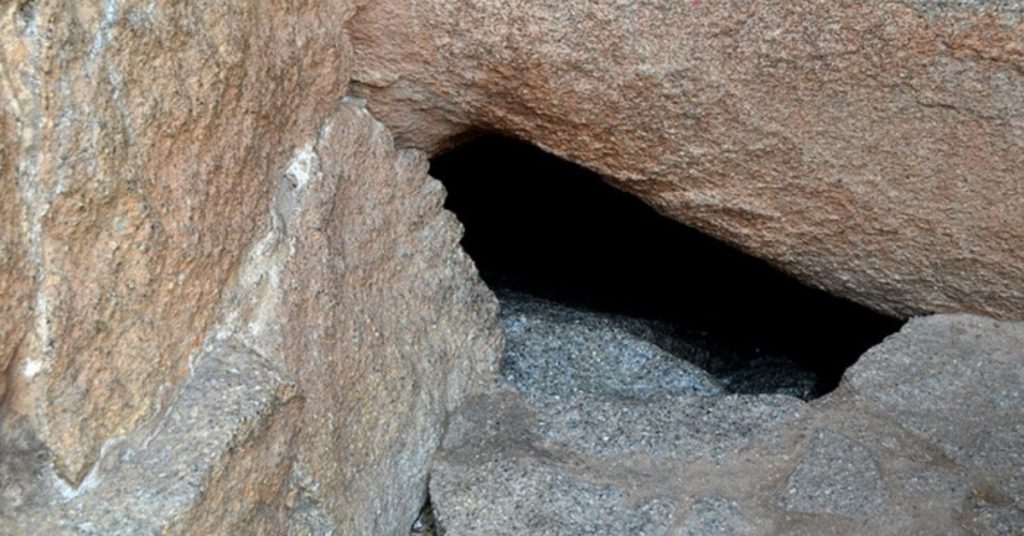
Nagarahavu
A movie titles “Nagarahavu” was made in honor of this legendary woman. In this movie, the protagonist Ramachari, played by Vishnuvardhan, narrated the tale of Onake Obavva to school children. There is also a moving song, sung by P.B. Srinivas, which is bound to induce pride in you. Combined with Puttana Kanagal’s direction, this movie will move you to tears.
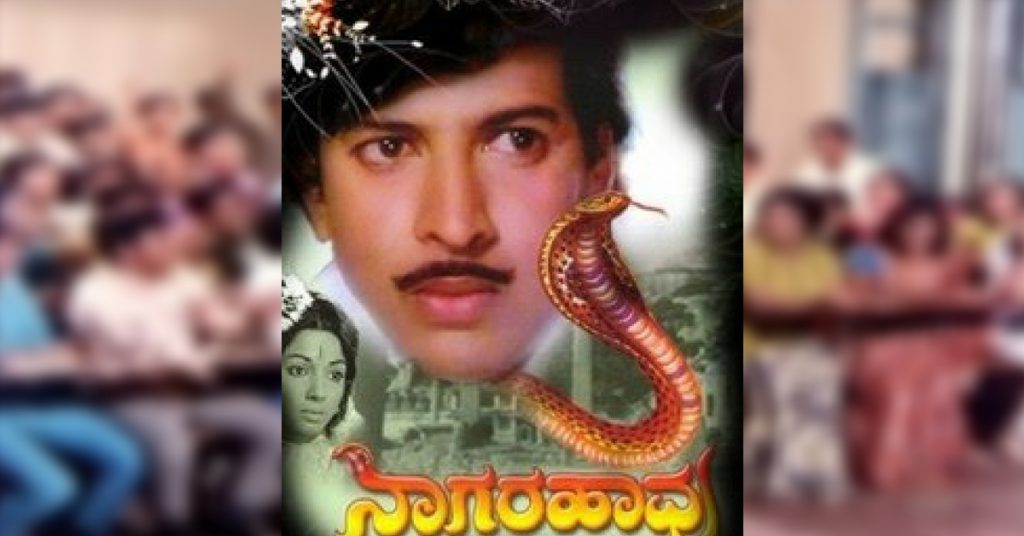
An impressive bastion
The fort has 19 gateways, 38 posterior entrances, 35 secret entrances, four invisible passages, water tanks, and 2000 watch towers to guard and keep vigil on the enemy incursions. The storage warehouses, pits, and reservoirs were primarily designed to ensure that the food, water, and military supplies were sufficient enough to endure a long siege. Quite surprisingly, all these facilities have been well conserved till today.
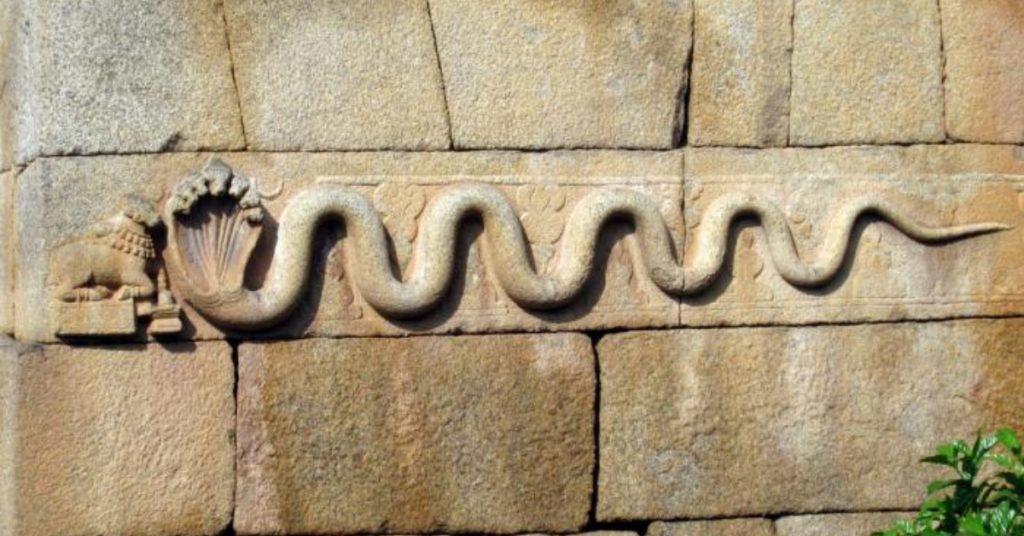
The seven walls
Seven walls (Yelusuttinakote in Kannada) form the fort. Each wall has a gate with an ascending access through narrow, winding corridors which made it difficult to use elephants for attacking the fort or to use battering rams to break down the gates. Small embrasures in the fort walls were provided for the archers to shoot arrows at the enemy. There were four gates provided in the outermost walls because of various reasons. The four gates (called Bagilu in Kannada) are Rangayyana Bagilu, Siddayyana Bagilu, Ucchangi Bagilu, and Lalkote Bagilu.

Palace of Stones
Depending on the topography, the fort walls were built with heights ranging from 5–13 meters (16–43 ft). Initially, it was built in mud and was subsequently strengthened with granite stone slabs in the 18th century. An outstanding feature noticed is that no cementing material was used in joining the large granite cubes which have been neatly sized, cut, trimmed and placed in position.
The total length of the fort walls is about 8 kilometers and covers an area of about 1,500 acres. It is also said that when the upper fort was strengthened for military purposes with gun positions, the services of French mercenaries were used.

Rainwater Harvesting
Rainwater-harvesting structures were built in a cascade development, which ensured large storage of water in interconnected reservoirs. It is said that the fort never faced any water shortage, thanks to these structures.
Temples and Tributes
The massive ‘Palace of Stones’ fort contained many buildings and many temples set in the rocky surroundings on the hill. Eighteen temples were built in the upper fort. Some of the well-known temples were the Hidimbeswara, Sampige Siddeshwara, Ekanathamma, Phalguneshwara, Gopala Krishna, Lord Hanuman, Subbaraya and Nandi. In the lower fort, a temple dedicated to the deity of the Nayaka Palegars, the Uchchangiamma or Uthsavamba, was built amidst the rocks of the fort on the hill.

Such places must always be visited, for this is one of the best ways to remember our heroes and how they fought to keep the common folk safe and secure.
Distance From Bengaluru: 4 hours approximately by train, and 3 hours 36 minutes by road.
Best time to visit: October to March
If You don’t want to miss our next Post then Like and Follow MetroSaga on Facebook and Instagram or simply download our Android App
You can also Subscribe to MetroSaga for newsletters.


































